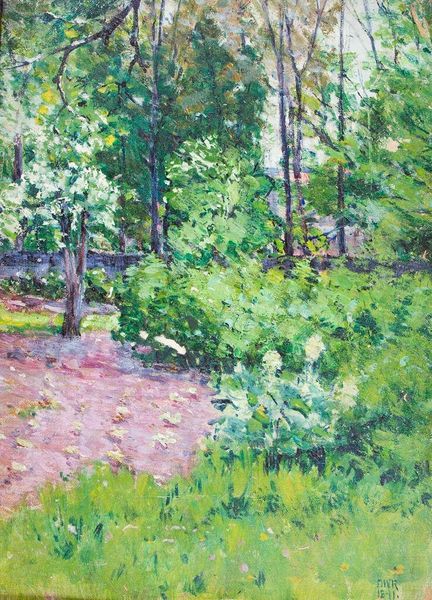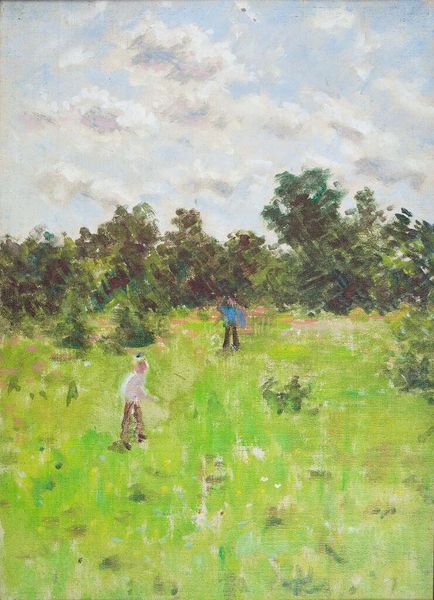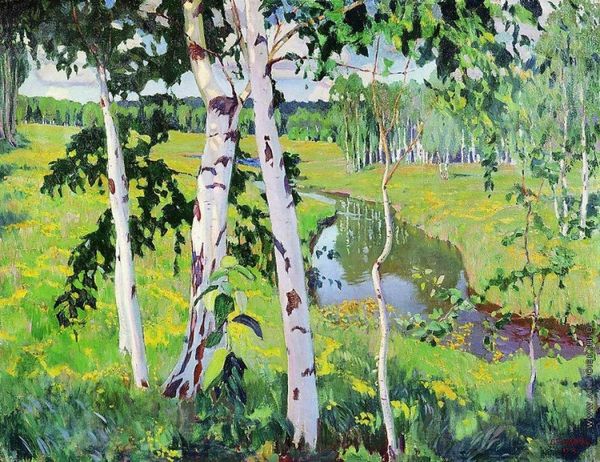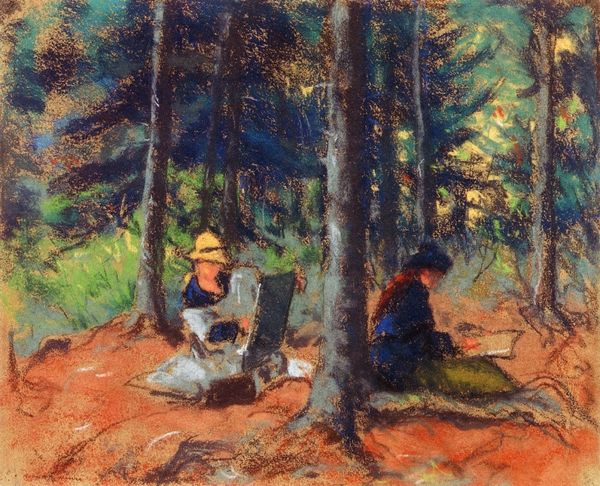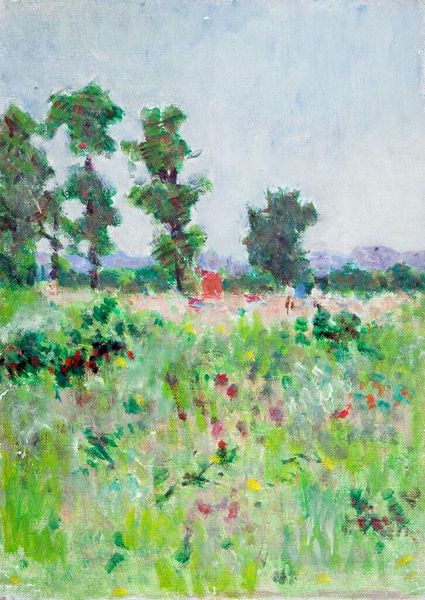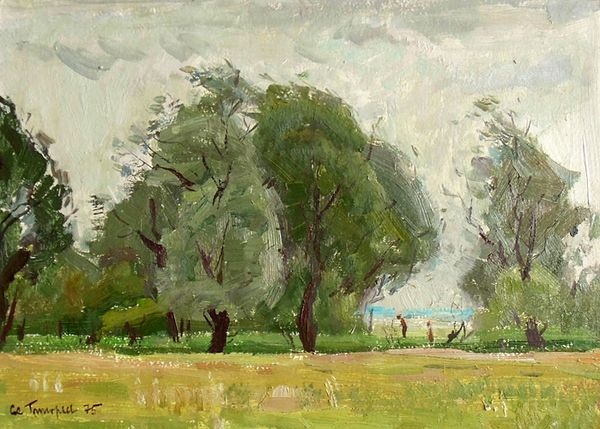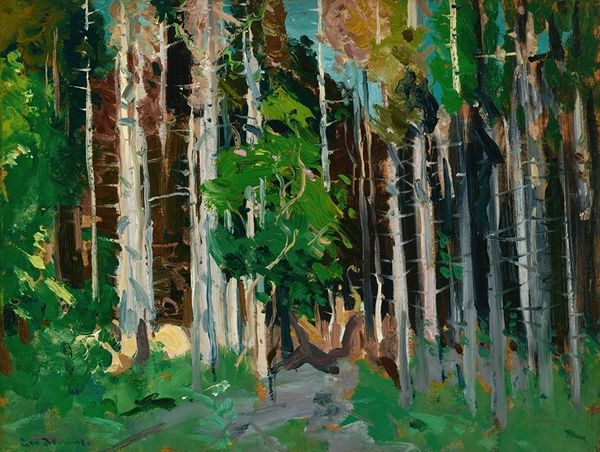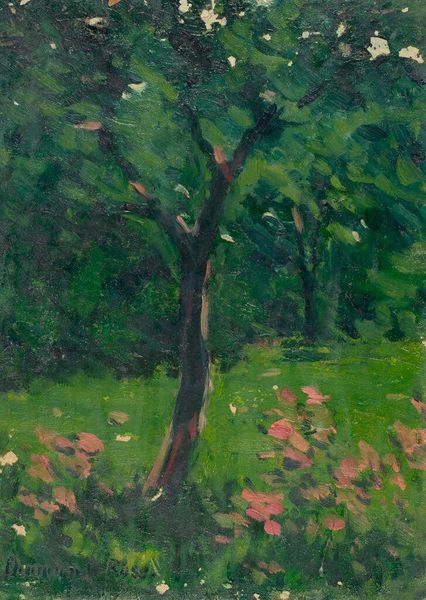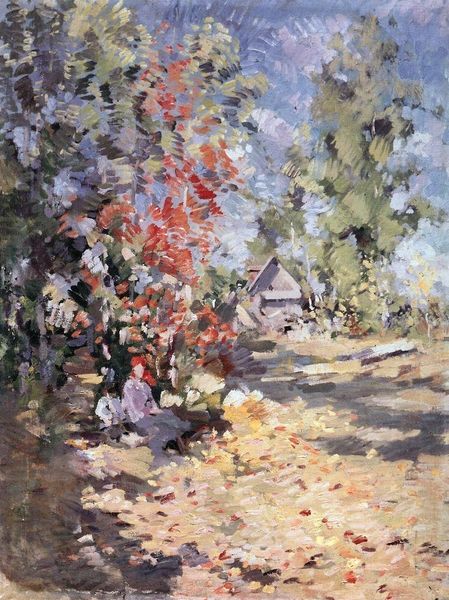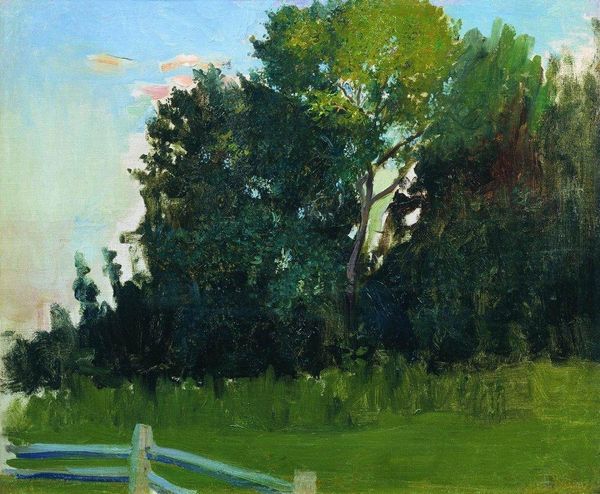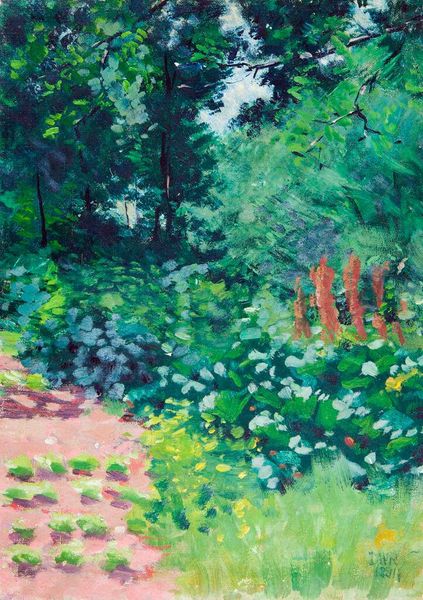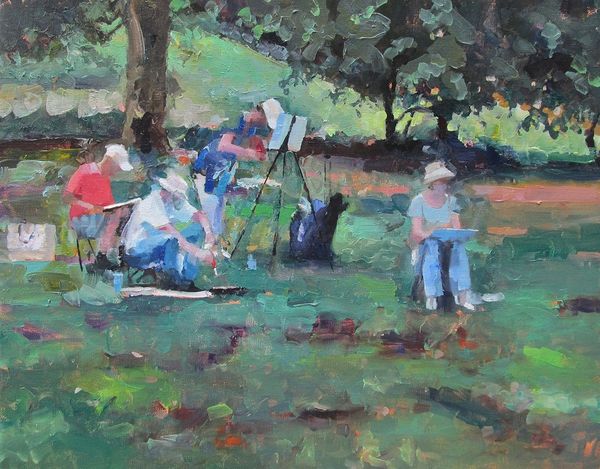
Copyright: Tetyana Yablonska,Fair Use
Curator: This is Tetyana Yablonska’s "In the Forest Glade," painted in 1959. Yablonska was a prominent Ukrainian artist known for her impressionistic style. Editor: It's instantly striking – all dappled sunlight and breezy strokes. It has a feeling of everyday leisure, like catching children playing in their natural world. Curator: Indeed. Yablonska employs oil paint in a very plein-air fashion. You can see the thick impasto creating texture, particularly in the foliage. It makes you think about the labor involved, the act of physically applying those dabs of paint to evoke the fleeting impression of light. Editor: And that informality reflects the broader socialist realist context it emerged from. Here the emphasis isn’t on heroic depictions of labor but more personal scenes. The children, seemingly undisturbed, are far from the public role imagery typically took at this time. It captures more intimate values, I think. Curator: It's interesting that you highlight that shift. When you think about material availability during that period, and the artist’s choice of depicting these specific subjects— what does this decision reflect? Access to materials would affect color choice, texture, composition… Editor: That's right. The focus on leisure and family can also be viewed through the lens of post-war reconstruction and the desire for normalcy, and even stability. Perhaps the display of childhood simplicity served as an attractive counterpoint for many adults facing social changes and pressure. Curator: Precisely, and the loose brushwork reinforces that atmosphere of transience and youth. Everything suggests spontaneity. But spontaneity achieved through diligent, time-intensive, application of paint! It's interesting. Editor: It also raises a point about museums’ selections and the implicit stories we create when we curate exhibits, highlighting certain narratives. I am also wondering about who had access to seeing such work, then. Curator: A valuable observation. Yablonska provides a bridge. Between official doctrine and a more intimate observation of ordinary existence; we see not only what is captured in the image but glimpse as well the sociopolitical frameworks defining its context. Editor: Thank you; it makes one pause and think deeply about what is shown… and not.
Comments
No comments
Be the first to comment and join the conversation on the ultimate creative platform.
